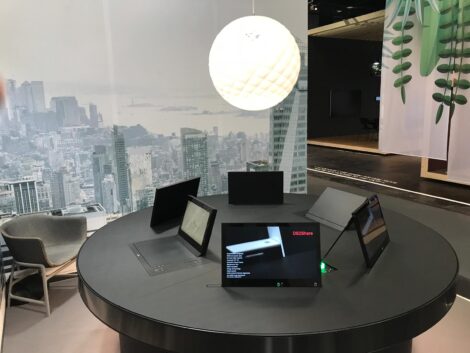The design of a meeting space isn’t just about aesthetics—it plays a critical role in shaping collaboration, communication, and decision-making dynamics. A well-thought-out meeting environment promotes creativity, inclusivity, and productivity, directly influencing the outcomes of discussions. By incorporating scientific principles from psychology and ergonomics, alongside innovative solutions like retractable technology, meeting spaces can inspire engagement and foster collaboration.
The Science Behind Designing the Ideal Meeting Space
An effective meeting space addresses both the physical and psychological needs of its users. Insights from cognitive and environmental psychology reveal how the physical environment affects behavior:
Proxemics and Territoriality
The study of proxemics—how people use and relate to space—shows that participants are more collaborative when they feel a sense of ownership over their personal space without being isolated.
Moreover, proximity often enhances the diversity and fluidity of discussions. When people from varied disciplines and backgrounds gather in the same space, the blend of perspectives can catalyze fresh ideas. Research suggests that the synergy of teams physically working together can produce novel solutions at a rate unmatched by virtual teams.

The importance of eye contact for decision making
Meeting tables designed with appropriate technology for each user ensure comfort, encourage eye contact, and foster interaction.
Eye contact is a fundamental aspect of human communication that significantly impacts interpersonal interactions and decision-making processes. It plays a pivotal role in building trust, conveying confidence, and facilitating understanding between individuals.
Ergonomics
Ergonomics is not just about comfort; it is about creating an environment that enables people to perform at their best. In meetings, a well-thought-out ergonomic design ensures that participants remain focused, engaged, and free from physical strain. Avoiding practices like turning to view wall-mounted screens is a simple yet effective step toward a healthier and more productive meeting culture.
Each Room Reflects Its Personality
Customization plays a key role in meeting space design. Incorporating tailored technology, unique finishes, and corporate logos reinforces a brand’s identity and communicates its essence. Personalized meeting tables contribute to creating a professional and cohesive atmosphere.

Technology Integration
A great meeting space seamlessly incorporates technology to enhance communication and decision-making. Tools like interactive retractable monitors, gooseneck microphones, and personal cameras should be both accessible and unobtrusive.
The Role of Retractable Technology in Inspiring Collaboration
Integrating retractable technology into meeting tables represents a significant innovation in meeting room design. This approach enhances functionality while inspiring participants in several ways:
Reducing Clutter and Enhancing Focus
Retractable screens, power outlets, and charging ports eliminate the need for external devices and tangled cords, resulting in a cleaner, more organized space. This reduces cognitive overload, allowing participants to concentrate fully on the discussion at hand.

Encouraging Participation and Inclusivity
Accessible yet discreet technology encourages collaboration. Retractable features empower participants to actively engage by sharing content, presenting ideas, or accessing online resources. When technology is hidden, the focus shifts to human interaction, striking a balance between digital and personal communication.
Fostering Innovation
The presence of advanced retractable technology communicates modernity and forward-thinking, psychologically priming participants to think creatively and approach challenges with an innovative mindset.
Enhancing Flexibility and Functionality
Retractable technology allows a meeting room to adapt to various purposes, transitioning seamlessly from a high-tech presentation space to a traditional discussion setup. This versatility accommodates different collaboration styles, catering to both high-tech and low-tech preferences.

Meeting space design goes beyond logistics—it’s a powerful tool that influences behavior, interactions, and decision-making. By integrating ergonomic, psychological, and technological principles, organizations can create environments that enhance collaboration and foster innovation. Retractable technology, in particular, strikes the ideal balance between functionality and inspiration, promoting focus, inclusivity, and creativity. As companies increasingly prioritize innovation and teamwork, the significance of thoughtfully designed meeting spaces will continue to grow, solidifying their role as a foundation for effective collaboration in the modern workplace.
